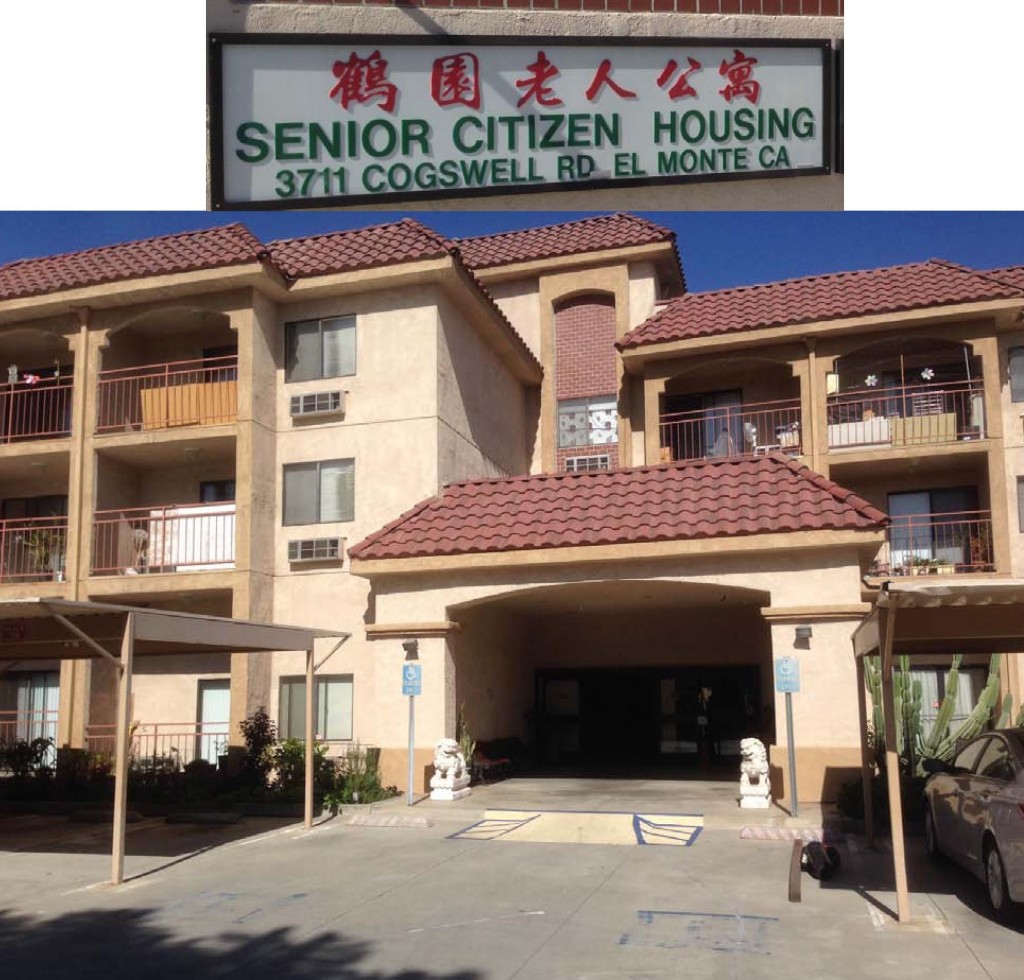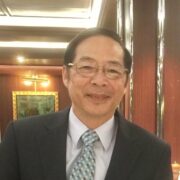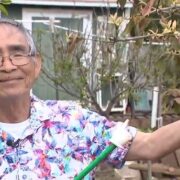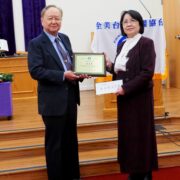The First Overseas Taiwanese Senior Apartment: Flamingo Garden Apartments
Author: Kenjohn Wang
In 1978, tens of elderly people, including Mr. Chan-ao Lai and Mr. Hua-chuan Hsiao initiated the preparation process for a seniors association. Since members belonged to two different churches, the Evangelical Formosa Church and the Taiwanese Presbyterian Church, they were having a difficult time working together. Mr. Lai asked me to participate, hoping that I could help them coordinate and facilitate the creation of the seniors association. After I helped them coordinate, they appointed the first Chairman, Mr. Meng Lan Chen. On May 5th, 1979, the Taiwanese American Seniors Association was established, borrowing the Los Angeles Evangelical Formosa Church as their venue.
When Mr. Meng Lan Chen was serving as President, he hired his eldest son, pharmacist C. J. Chen, to act as secretary. Matters were handled very smoothly, so he was hoping to be reelected, but this caused Hua-chuan Hsiao and other elders to protest. The main reason they protested was that President Chang would frequently visit his daughter’s home in New York, so he often missed meetings because he wasn’t in Los Angeles. Moreover, the main reason he wanted to be reelected was that he was afraid that if by chance, after putting in a lot of hard work into creating the Senior’s Association, a person of the Kuomingtang party was elected to the presidency, he would feel very uneasy. Mr. Lai and Mr. Hsiao came to find me again, hoping that I could convince Mr. Chen to step down. Thus, I once again came forward to help coordinate between the two churches so that they could take turns selecting a president, and I successfully persuaded Mr. Meng Lan Chen to step down. All of the documents managed by C.J. Chen were also successfully transferred over to Dr. Hua-chuan Hsiao, who had been assigned by the Taiwanese Presbyterian Church to take over as the second president.
Chan-ao Lai is the founder of the Senior’s Association; he is very passionate and seeks neither credit nor fame. To help raise funds for the Seniors Association, he and a friend opened a small restaurant, but the business not only failed, it also lost its startup capital. Dr. Hsiao worked really hard as president. His work was so impressive that everyone decided to reelect him as the third president. During this time, the association decided to rename themselves the “Taiwan Elders Association” and rented a small space in Little Tokyo for an office. The space had an entertainment room where the elderly could play chess and mahjong. The association began to issue a monthly newsletter.
At the time, I was only 48 and unqualified to be an official member of the association. Still, as an honorary member, I often met with their directors. In addition to coordinating as an intermediary, I donated $1,000 annually for many years, and helped the association fundraise. In 1994, when we were celebrating the 15th anniversary of the association, I received the award for “Most Donations.”
The third president, An-Su Gao Lai, restored the name to “Taiwan Seniors Association” and advocated for the construction of senior apartment. At that time, there were more than 600 members in the association.
In 1985, after the manager of General Bank of Commerce Min-chung Zhuo, and I held a fundraiser for the Seniors Association, we put in an offer for a 40,000 square foot piece of land in Monterey Park. We proposed constructing an apartment complex for seniors, but the project was opposed by the local residents and city government. Though the Seniors Association finally won after a series of protests and demonstrations, there were still a number of difficulties that forced the project to be put on temporary hold. In 1986, due to deficits in the city budget, the city government stopped subsidizing the senior apartment project. Though the project experienced a number of unexpected twists, President Lai insisted on continuing to push, and I created a slogan: “Our elderly should be taken care of by our own community; we should not rely on the U.S. government to do so.” Then, we purchased a piece of land measuring 60,000 square feet in El Monte.
In 1987, the Flamingo Garden Seniors Apartment was designed by architect Tung-tsai Li, constructed by the Wei Chuan Company (for no cost), and supervised by Kun-shan Tsai. The team used the most cost-effective and difficult methods of construction, creating a first-class quality apartment for the elderly. The project was finished in 1988 and held its grand opening ceremony on March 5th. On the opening day, the mayor came to participate in the ribbon cutting, and the council issued me a certificate.
This 58-unit apartment complex for the elderly includes a 4,000 foot social hall, a kitchen, an office, and even a medical care office that is operated by Taiwanese volunteer doctors.
Starting in 1984 when An-Su Gao Lai served as president and began the senior apartment project, up until the beginning of construction in 1987, due to a number of people who opposed the project, we feared that no one would come to live there. After a year of promoting, only 20 people registered for accommodations. Secondly, since the General Bank of Commerce had granted many real estate loans, when the economy took a downturn, many accounts suffered losses. Because of this remaining fear, the bank didn’t dare grant us a loan, to which I replied in offense, “What is the purpose of a Taiwanese bank that won’t lend money to Taiwanese public welfare causes?” Thus, the loan was able to pass through.
Buying a $50,000 share only needed a cash investment of $25,000, the rest was lent by the bank. There was a total of 58 shares (one for the Seniors Association). Getting investors was going very slowly, but in the end, Charles Ting, Cheng-tsung Chang, and I were able to purchase the remaining shares.
At the entrance of the Flamingo Garden is a pair of male lion statues, purchased by Min-chung Zhuo for $3,000. The biggest contributors to this project, the ones who transformed the building into our very own Taiwanese senior apartment, were An-Su Gao Lai and Min-chung Zhuo. Ms. Lai Kao An-tzu served as president for a five year term from 1983 until the completion of the apartments in 1988 before resigning. And Ming-chung Zhuo, an average worker with no large assets, was reported to be one of the top donors to the project, second only to me.
Though we originally feared that the building would be empty, and we’d lose our investments, after the opening, the apartments were quickly filled with residents and there was even a list of people waiting for empty spots to open up. Though we as investors had prepared ourselves to make some sacrifices, in the end we didn’t have to make any sacrifices, we actually made money.
When the Taiwanese American Seniors Association was at its largest, it had 1400 members. When officials from Taiwan come to visit, they usually visit the Chinese community center in Chinatown first, and then came to the Flamingo Garden Apartments after, since there is no Taiwanese community center. If you travel the world, any place with overseas Chinese communities has a Chinese community center, and there are also cultural centers for other ethnic groups. Only Taiwanese community centers are missing (except in Thailand). Taiwanese have been immigrating to the U.S. for about forty years now, I wonder what the Taiwanese Association council members who proudly represent our community think of this?
Excerpt from the Taiwanese Seniors Association of Southern California 20th Anniversary Memorial Special Issue.
Translated from 54. 海外台灣人第一所老人公寓一鶴園 / 王桂榮/2014/10






